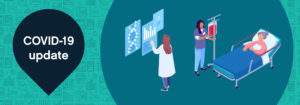The foundation of our architecture
Our data fabric is the foundation for a robust architecture of solutions and services—each meticulously designed to help payers and providers achieve their goals.
Each thread of the data fabric—interoperability, visualization, predictive analytics, augmented analytics, benchmarking, and more—plays a key role in helping you make decisions confidently and see measurable impact.
Expand to view (+)
Components of our data fabric
MedeEnrich™
Data lake, master person index,
and self-service capabilities
The key to turning raw data into meaningful insights is data orchestration. With more than two decades of research and development fueling its capabilities, MedeEnrich is our unrivaled technology for data orchestration, enrichment, cataloging and quality assurance. It is tailored to enable commingling of ad-hoc, non-standard data sources—such as SDoH or productivity data—with the goal of creating an analytical source of truth for your enterprise.
MedeWorks™
Highly scalable data visualization
Leveraging a combination of proprietary and industry-standard national data sets, MedeWorks contains built-in benchmarking and drill-down capabilities to help users easily visualize data, spot trends, make comparisons and ask better questions. The platform also boasts 200+ pre-built, customizable analytics views, a user-friendly look, feel, and experience, and extensive security measures and provisioning capabilities.
MedeElevate™
Augmented analytics
Healthcare organizations need innovative analytics capabilities to capitalize on data, reduce human error, and drive cost efficiencies. MedeElevate offers intuitive visualization, predictive analytics, benchmarking, guided analysis, and machine learning—helping payers and providers make efficient decisions and realize positive outcomes. Platform capabilities include automatic, customizable text-based narratives on charts; predictive search within reports, charts, and fields; and a robust rules engine supporting outlier identification and root cause analyses.
Why our data fabric is superior
What you're used to
What we offer
Multiple disconnected data sources that are hard to ingest and unify
What you're used to
What we offer
Black box platform
What you're used to
What we offer
Limited integration
What you're used to
What we offer
Disparate and non-standard platform management
What you're used to
What we offer
Significant reporting lag time
What you're used to
What we offer
Inflexibility
Get our take on industry trends
Measuring provider cost and utilization
No matter the time of year, payers and providers should work to agree on a shared source of truth when it comes to data. With the recent end of the year, it’s time to celebrate the new year (who isn’t ready to say goodbye to 2020?) and close the books, which includes the reconciliation of any shared savings or losses.
Read on...Data visualization: A picture is worth a thousand…healthcare data points?
The amount of data produced daily has grown exponentially with nearly 90% of the world’s data generated in the last two years alone. To ensure we can make sense of this data, analysts must find meaningful ways to present the information to their audiences.
Read on...How to help employer groups plan in a time of uncertainty
Employers and their sponsored health plans are thinking about next year’s benefit designs with a significant challenge not seen before: the effect of the coronavirus pandemic. There are important considerations to take into account before making any decisions about new or existing coverage. Becky Niehus, a director of Product Consulting at MedeAnalytics, explores these new issues and what employers can do to ensure employees are “covered.”
Read on...Healthcare’s return to “normal” after COVID-19: Is it possible?
As providers determine how to get patients to return to facilities for routine disease management and preventive screenings, opportunities are ripe for the application of analytics to triage at the right time to the right setting. Data related to COVID-19 will continue to flow rapidly, but there are possibly more questions than answers now about a return to “normal.”
Read on...Want to talk with one of our experts?



